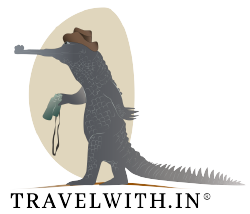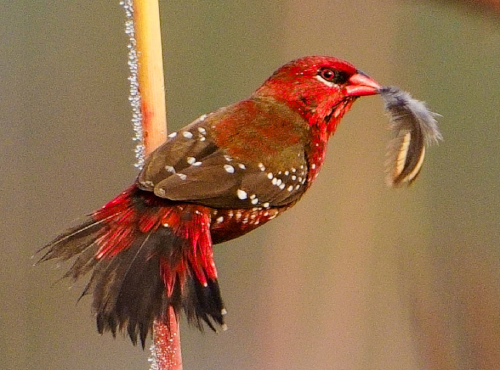Kaziranga – the Land of the Big 5, is what you will see first on sign boards as you are about to reach from Guwahati in Assam. The Big 5 are the Elephant, Tiger, Wild Water Buffalo, Eastern Swamp Deer and the one-horned Rhino. The population of the latter three species is now mostly restricted to Assam where they are thriving after decades of declining populations. However, Kaziranga is home to so much more than just the Big 5 and I am sure that you won’t be disappointed even if you don’t spot a tiger. Visit and follow our Instagram page to see photos from Kaziranga and other national parks we cover.
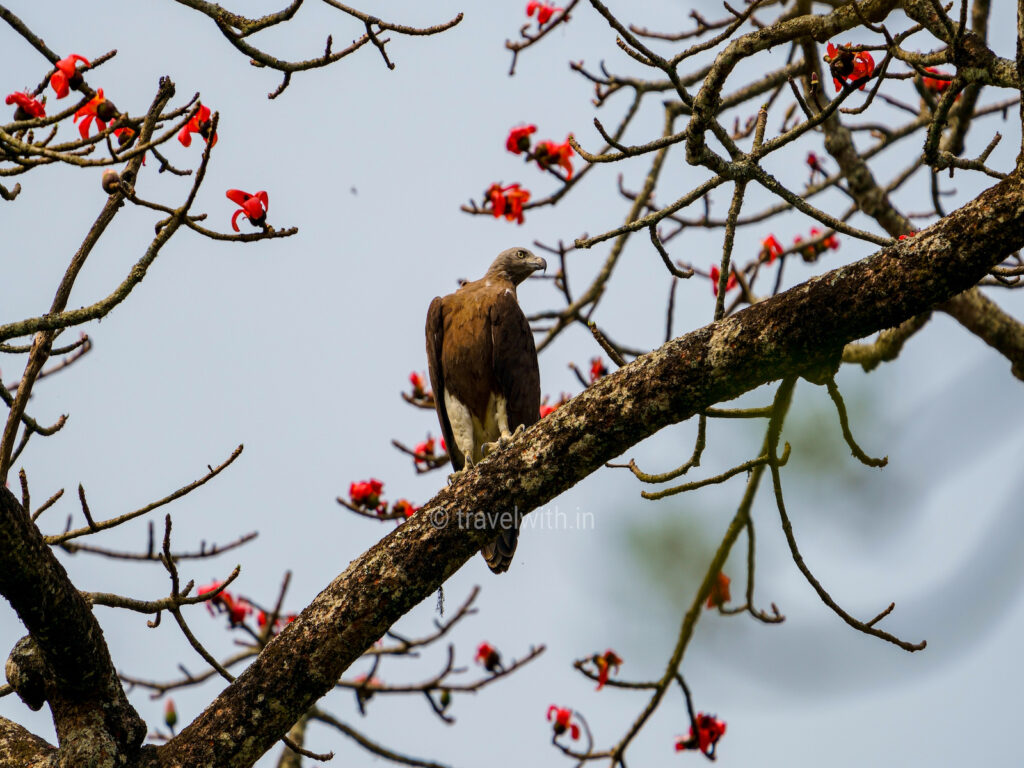
Grey-headed Fish Eagle
First – the logistics. To get to Kaziranga you must fly in to Guwahati. From the airport it takes 4-5 hours by road. Roads are mostly in good condition other than a few patches under construction. Taxis are your best bet – one that is pre-booked through a professional taxi operator. I had an interesting experience on my maiden visit there recently. The taxi drivers I engaged – the cars were not clean, we barely spoke a common language, one driver had his friend tag along and multiple stops were made enroute which took us almost 6 hours to reach Kaziranga. When you book a taxi, it is cheaper for the taxi to stay with you for the duration of your trip even though you may not require the vehicle on some days, for example when you do back to back safaris.
Kaziranga is best visited from November to April. May onwards is the monsoon season and is when the Brahmaputra floods making most of the Park inaccessible. The Park opens in October but if it’s rained more than usual then some zones and routes will not be open for the public. Plus after the monsoon, the grasslands are covered with tall elephant grass and other vegetation making it difficult to spot wildlife.
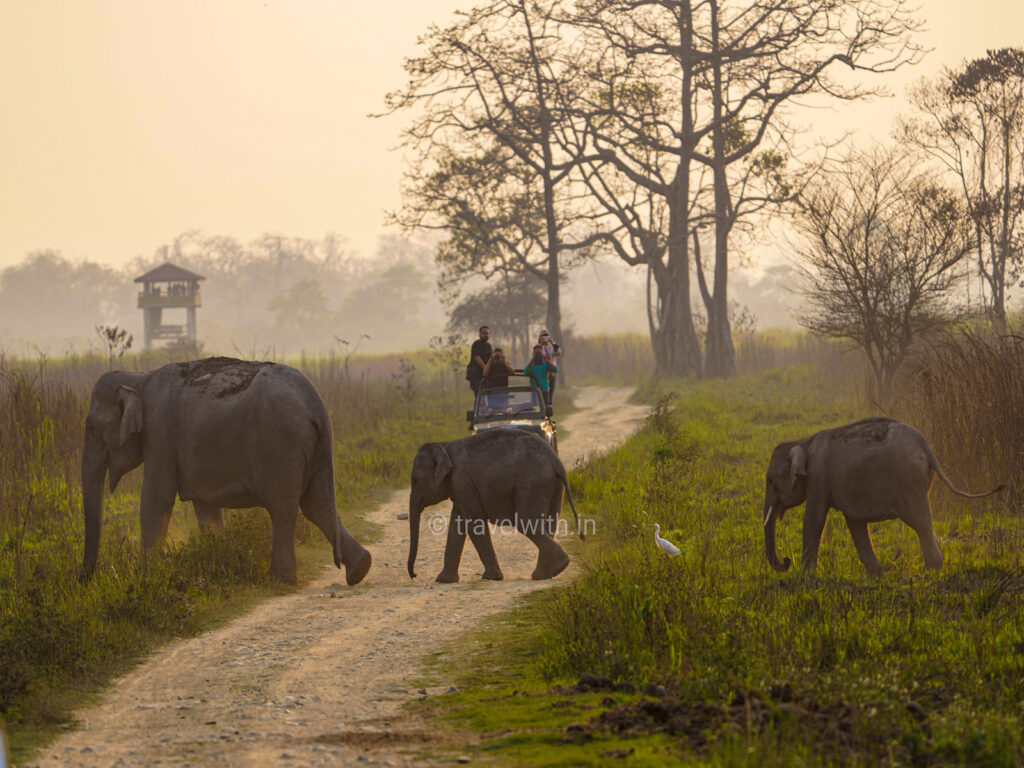
Elephant Road Block
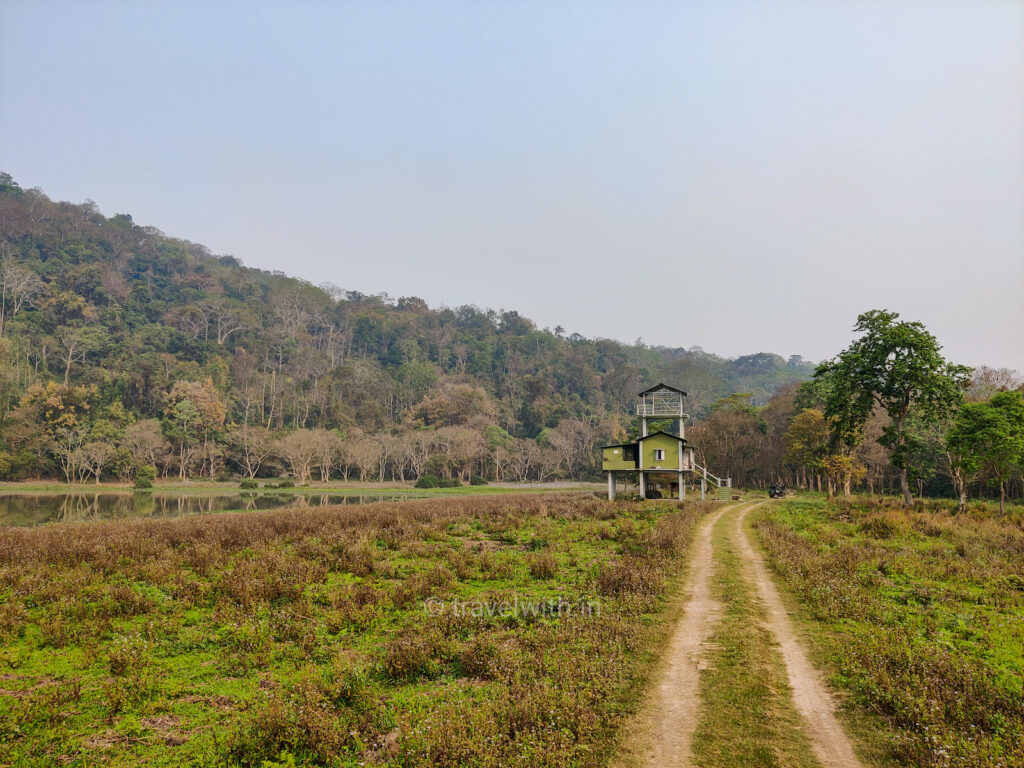
Burapahar zone
There are four zones in Kaziranga – Central, Western (or Bagori), Eastern (or Agaratoli) and Burapahar zones. When planning a visit to Kaziranga I strongly recommend visiting all four zones at least once. The Central zone is where majority of the hotels are located but it is also the most crowded. I thoroughly enjoyed the safaris in the three un-crowded zones. There weren’t many vehicles making wildlife encounters peaceful and long lasting.
If your hotel is in the vicinity of the Central zone, then it will take you approximately 45 minutes to get to Burapahar gate and 30 minutes to get to the Eastern zone gate. Safari timings are in general from 7:30AM – 11AM and 1:30PM – 5PM. These timings are much longer than many other national parks in India where you exit after a measly three hour safari.
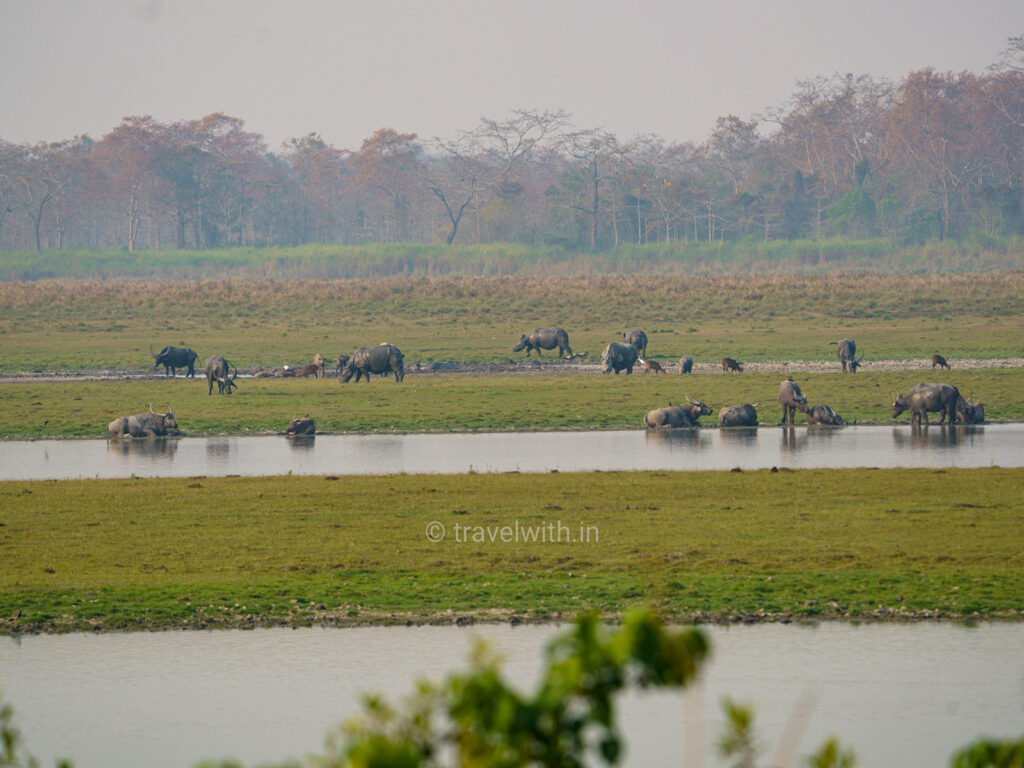
Kaziranga’s Grasslands – home to many
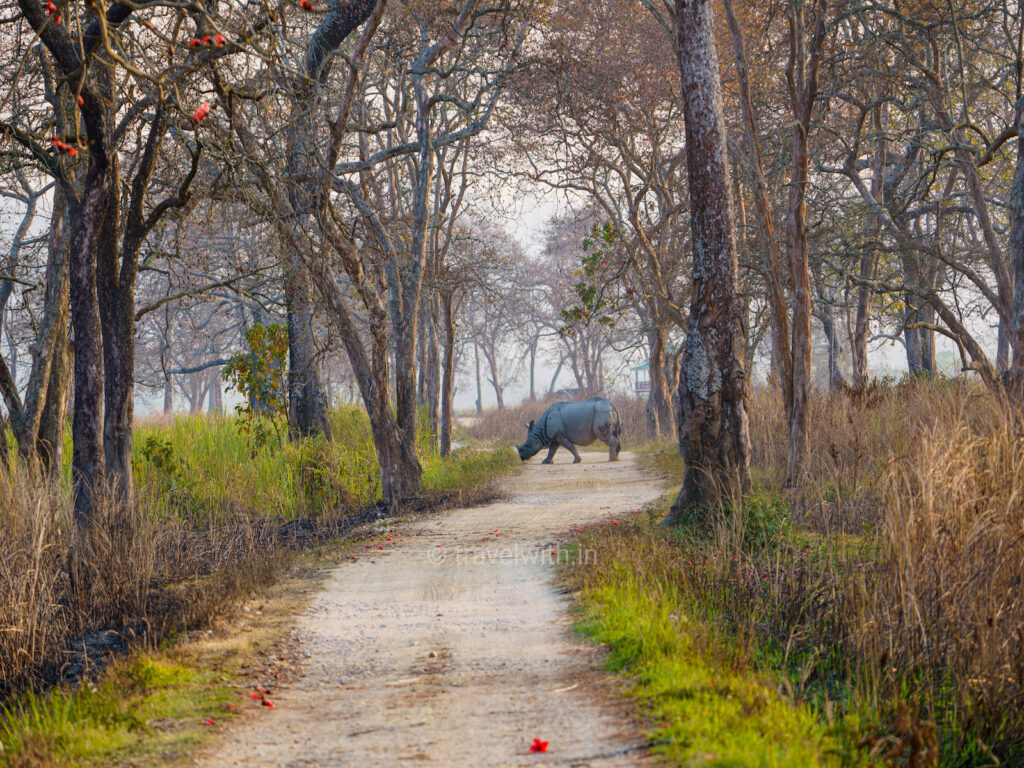
Rhino Crossing
Bring water (preferably in re-usable water bottles), buffs to cover your face from dust, sunscreen, hats and a good pair of binoculars. No edible items are allowed during safaris, your back packs will be inspected by guards.
Maybe it was just plain luck but I saw a tiger out in the open in the Burapahar zone at 9:30AM! I was informed that in Kaziranga, tigers are very shy and do not walk alongside your vehicle as they do in Ranthambore and Central Indian national parks. I’m very sure that if the area was swarming with vehicles, this tiger would not have given me the opportunity for such excellent photos.
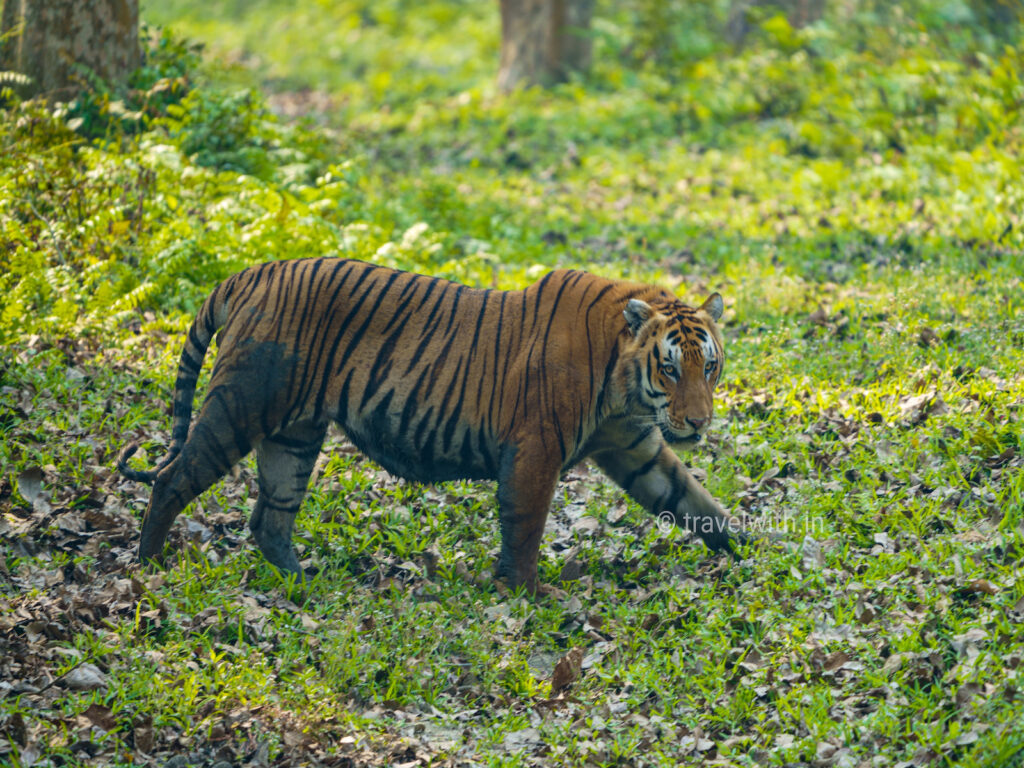
Kaziranga’s Tiger
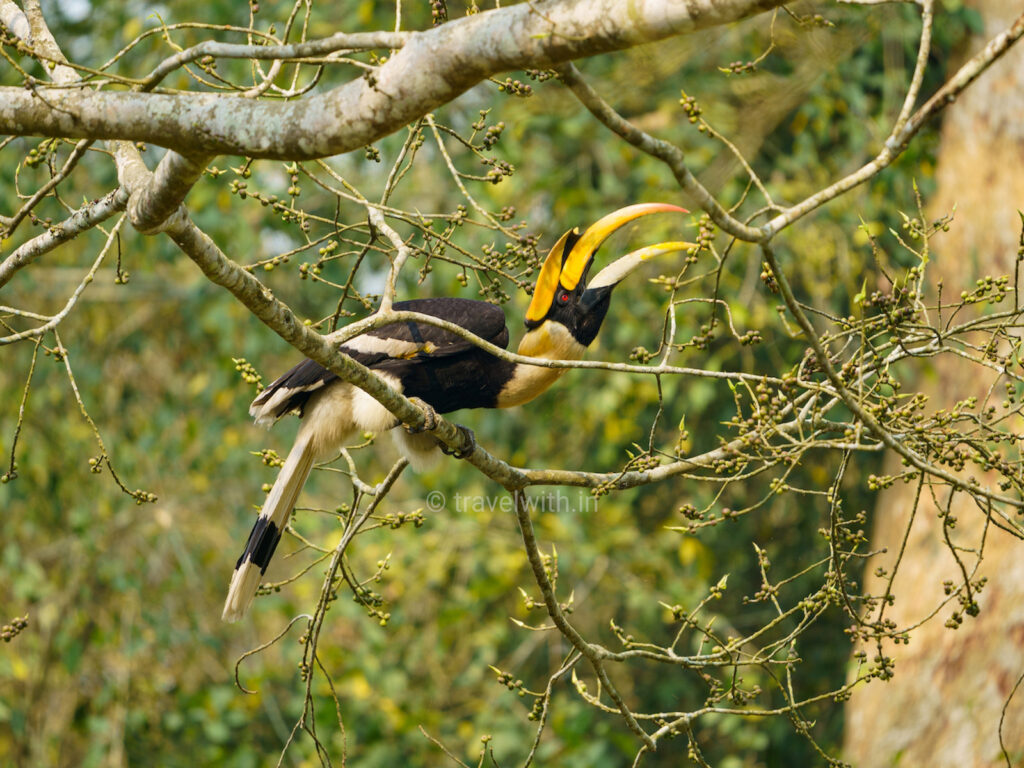
Great Indian Hornbill
Other than the tiger sighting, I also had some amazing encounters with Great Indian Hornbills. I definitely picked up a couple of things about their behavior. On one occasion a male was courting the female by plucking and feeding her berries.
In another, the male hornbill was calling for a mate. He was perched on the tallest tree and his call was loud and echoed far and wide in the otherwise silent forest.
Video Credits: Anshu(the man) Jajodia
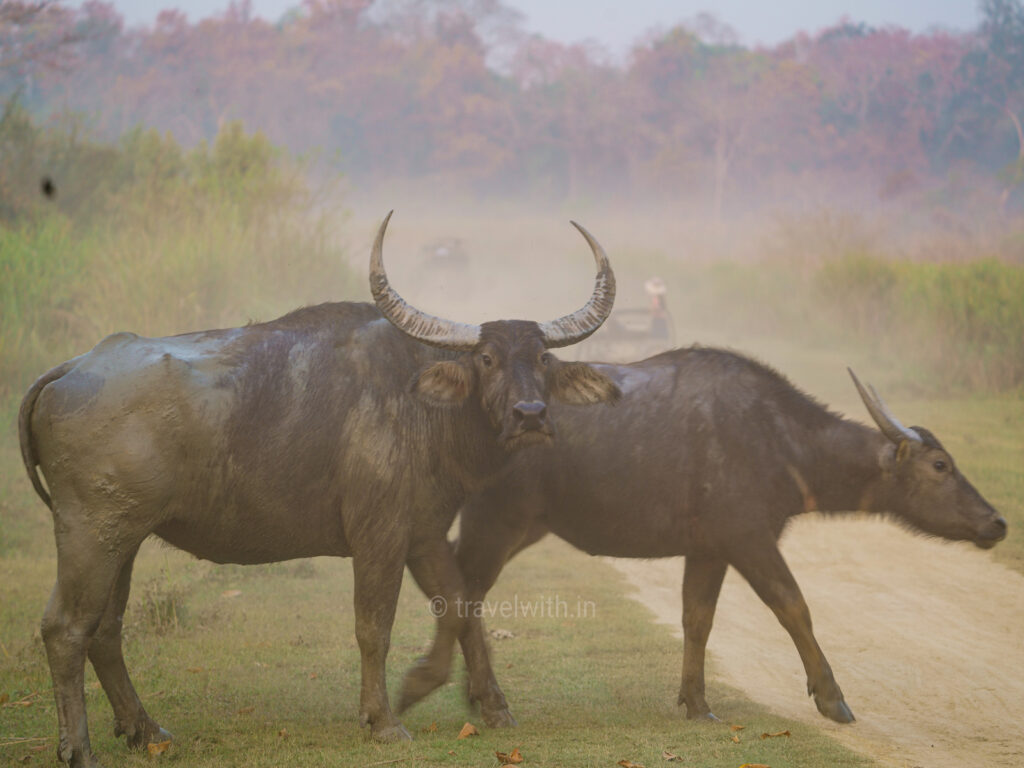
Wild Water Buffalos
On my way to Burapahar zone I spotted a family of Hoolock Gibbons. These Gibbons are the only species of ape found in India and North East is where their population is restricted to in India today. To know more about Hoolock Gibbons visit Hoollongapar Gibbon Sanctuary.
On another occasion, I saw an agitated rhino who according to my guide had perhaps ventured recently from the non-tourism part of Kaziranga (we tourists get to see only 20% of any national park in India) and was not used to seeing vehicles. It mock charged us a couple of times and believe me it was an action packed few seconds. All the other rhinos I saw were very peaceful and some were even less than 20 feet away from the vehicle.

Stare-down with a Rhino
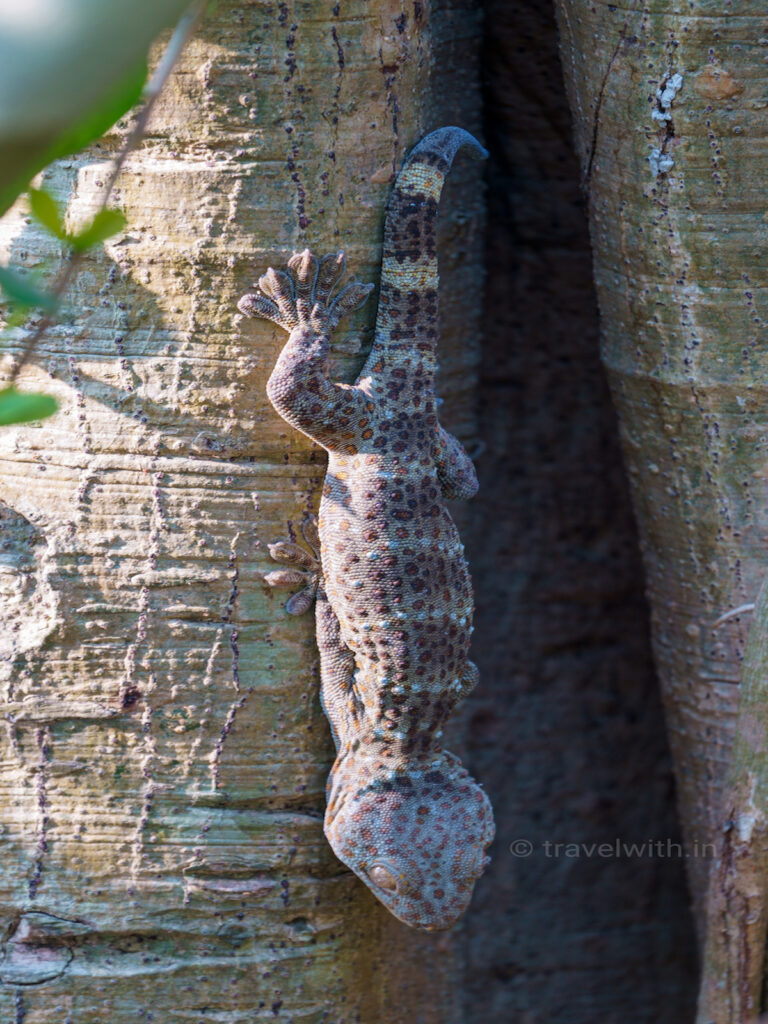
Tokay Gecko
One of the highlights of my Kaziranga safaris was a species I had least expected to see. While on safari in the Central zone, my guide pointed out to a massive tree trunk and asked me what I saw. It took me a while to figure out but when I eventually did, I was in for a big shock! I was looking at the Tokay Gecko. India’s largest gecko and globally the second largest. Once a common nocturnal lizard found in homes in North East India and south east Asian countries, today the Tokay Gecko’s population has been deeply impacted due to it’s high demand in Chinese medicine. Note to self: When on safari, always keep a look out for the smaller beings. Another endemic species to keep a look out for are the tiny Assam roofed turtles.
Kaziranga sunsets are special. Several animals dotted the landscape and the silhouettes were stunning. The vast open grasslands were thriving with rhinos, swamp deer, hog deer, wild buffalos and elephants. To see so many species congregate in such large numbers is not the norm for wildlife in India.

Kaziranga Sunsets
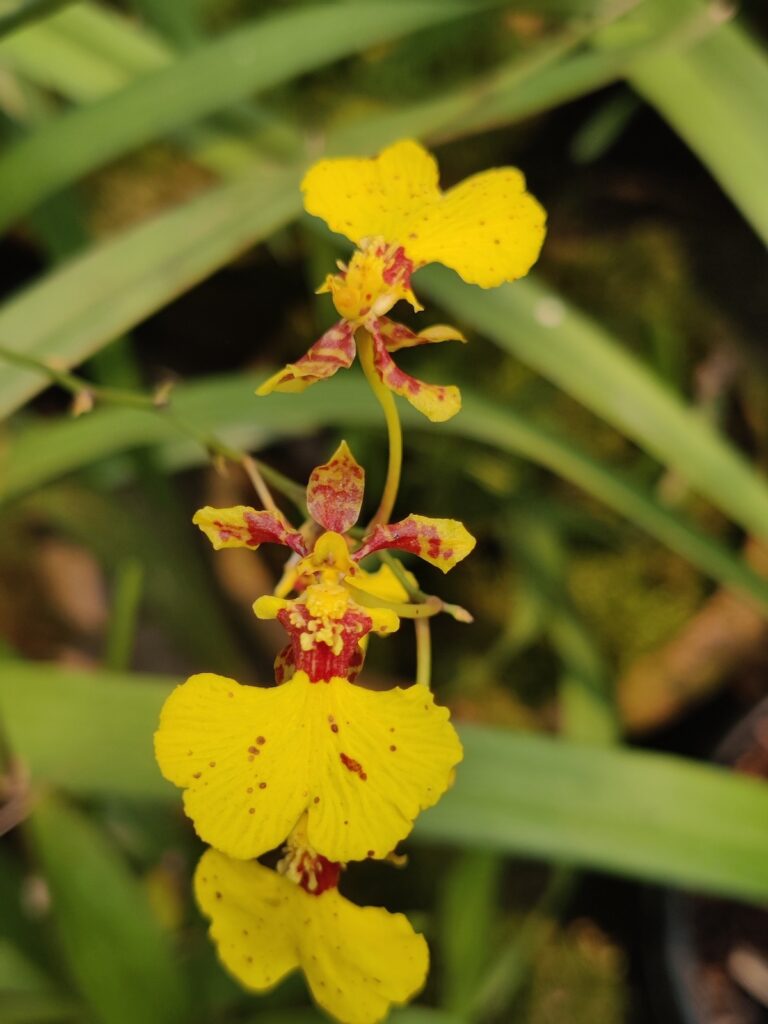
Dancing Lady Orchid
Apart from safaris in Kaziranga you must also visit the Orchid Park. I was blown away by the diversity of orchids in the well maintained bio-diversity park. Your entry ticket price includes a short guided tour of the various orchids in the Park. Other than orchids there are several other species of flora including venus fly traps and pitcher plants, local dance and culture programs in the evening and you can also purchase local produce such as tea, rice, spices etc.

Carry a good pair of binos
